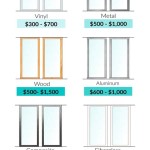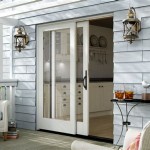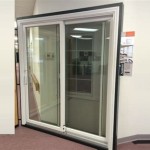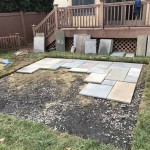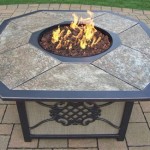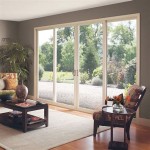Aluminum Patio Covers: Understanding the Cost Factors
Aluminum patio covers represent a popular choice for homeowners seeking to extend their outdoor living space while providing protection from the elements. They offer durability, low maintenance, and a relatively affordable price point compared to other patio cover materials like wood or steel. However, the cost of installing an aluminum patio cover can vary significantly depending on several key factors. Understanding these factors is crucial for homeowners planning a patio cover project and seeking an accurate budget estimate.
This article breaks down the costs associated with aluminum patio covers, exploring the different elements that influence the final price. By examining these factors, homeowners can make informed decisions and effectively plan their outdoor living space improvements.
Size and Dimensions of the Patio Cover
The most significant determinant of an aluminum patio cover's cost is its size. Larger patio covers require more materials, increasing the cost of the aluminum itself, the supporting structure, and the labor involved in installation. The dimensions are usually calculated in square footage, and quotes are often provided per square foot. A simple, smaller patio cover might start at a lower per-square-foot cost, while expansive or oddly shaped covers may have a higher per-square-foot rate due to increased material waste and installation complexity.
For example, a 10ft x 10ft (100 sq ft) patio cover will naturally cost less than a 20ft x 20ft (400 sq ft) cover. The relationship isn't always perfectly linear, as bulk discounts on materials and economies of scale can slightly reduce the per-square-foot cost for larger projects. However, the general principle remains: bigger patio covers equal higher costs.
Accurate measurements are critical for obtaining accurate cost estimates. Providing precise dimensions to contractors allows them to accurately calculate the materials needed and assess any potential challenges related to the patio's specific shape and size. Factors such as uneven surfaces or pre-existing structures abutting the patio area can also influence material requirements and labor costs.
Type and Style of Aluminum Patio Cover
Aluminum patio covers come in various styles, each offering different aesthetic and functional benefits, and consequently, different price points. The most common types include solid patio covers, lattice patio covers (also known as pergola-style), and adjustable louvered patio covers. The complexity of the chosen design directly impacts the material costs and installation time.
Solid patio covers, providing complete protection from sun and rain, are typically the most affordable. These are generally constructed with interlocking aluminum panels that create a watertight roof. The simplicity of the design translates to lower material costs and faster installation times. However, solid covers can significantly reduce natural light, which some homeowners may find undesirable.
Lattice patio covers, on the other hand, offer partial shade and allow some sunlight to filter through. They consist of spaced aluminum slats arranged in a grid pattern. While they are often more visually appealing and allow for airflow, lattice covers generally cost more than solid covers due to the increased complexity of the design and the precision required for proper installation. The spacing between the slats can also be customized, potentially impacting the total material cost.
Adjustable louvered patio covers represent the most sophisticated and expensive option. These covers feature motorized or manually adjustable slats that allow homeowners to control the amount of sunlight and ventilation. The added complexity of the louver system, including the motorization components (if applicable) and the intricate installation process, contributes to the higher price point. However, the versatility and customization options offered by louvered covers make them an attractive choice for homeowners seeking maximum control over their outdoor environment.
Materials and Construction Quality
The quality of the aluminum and the construction methods employed significantly affect the overall cost and longevity of the patio cover. Thicker gauge aluminum and high-quality powder coatings are generally more expensive than thinner, lower-grade materials. However, investing in superior materials ensures greater durability, resistance to corrosion, and a longer lifespan for the patio cover.
Aluminum patio covers are typically constructed from extruded aluminum, and the gauge (thickness) of the aluminum directly affects its strength and load-bearing capacity. Thicker gauge aluminum is better suited for areas with heavy snow loads or strong winds. While thinner gauge aluminum might be initially less expensive, it is more susceptible to denting, bending, and ultimately, structural failure.
The finish applied to the aluminum is also a crucial factor. Powder coating is the preferred method, as it provides a durable, weather-resistant finish that resists chipping, peeling, and fading. Cheaper alternatives, such as wet paint, are less durable and may require frequent maintenance. The quality of the powder coating also matters; some coatings offer superior UV protection and resistance to scratching than others.
Furthermore, the construction methods used to assemble and install the patio cover play a vital role. Welded connections are generally stronger and more durable than bolted connections, although they can also be more expensive. The quality of the fasteners and the precision of the installation also contribute to the overall integrity and longevity of the structure. Choosing a reputable contractor with experience in aluminum patio cover installation is essential to ensure that the project is completed properly and meets all applicable building codes.
Labor Costs and Installation Complexity
Labor costs are a significant component of the total price of an aluminum patio cover. Installation complexity is directly related to labor hours, and factors such as the patio's location, accessibility, and any necessary site preparation can influence the labor costs. Projects requiring significant excavation, concrete pouring, or electrical work will naturally incur higher labor charges.
The complexity of the patio cover design also affects labor costs. Simple, rectangular patio covers are generally easier to install than complex, multi-level designs. Adjustable louvered patio covers, with their motorized components and intricate wiring, require specialized expertise and can significantly increase labor time.
Permitting requirements can also impact both the labor and material costs. Local building codes often require permits for patio cover installations, and obtaining these permits can involve fees and inspections. Compliance with building codes may also necessitate adjustments to the patio cover design, potentially increasing material costs.
The hourly rate charged by contractors varies depending on their experience, location, and overhead costs. It's advisable to obtain multiple quotes from different contractors to compare pricing and services. However, it's important to remember that the lowest price is not always the best value. Consider the contractor's reputation, experience, and insurance coverage when making a decision.
Additional Features and Customizations
Adding extra features and customizations to an aluminum patio cover can significantly increase the overall cost. Common additions include integrated lighting, ceiling fans, electrical outlets, and screening. These features enhance the functionality and comfort of the outdoor space but require additional materials and labor for installation.
Integrated lighting can transform the ambiance of the patio area, allowing homeowners to enjoy their outdoor space after dark. Options range from simple recessed lighting to more elaborate landscape lighting systems. The cost of lighting depends on the type of fixtures chosen, the complexity of the wiring, and the labor involved in installation.
Ceiling fans provide much-needed air circulation during hot weather, making the patio more comfortable. Choosing a weatherproof ceiling fan designed for outdoor use is essential. The installation process typically involves running electrical wiring and securely mounting the fan to the patio cover's framework.
Screening can enclose the patio area, providing protection from insects and creating a more private outdoor space. Various screening options are available, including fixed screens, retractable screens, and motorized screens. The cost of screening depends on the type of material used, the size of the screened area, and the complexity of the installation.
Custom paint colors and finishes can also increase the cost of an aluminum patio cover. While standard colors are typically included in the base price, custom colors may require special ordering and application, adding to the overall expense. Similarly, custom designs or modifications to the patio cover's shape or structure can also increase material and labor costs.
Geographic Location and Regional Price Differences
The geographic location of the project significantly influences the cost of an aluminum patio cover. Prices for materials and labor can vary considerably depending on the region, with areas with higher labor costs and stricter building codes generally having higher overall project costs.
For example, coastal areas may have higher material costs due to the increased demand for corrosion-resistant materials. Areas with frequent severe weather may require stronger, more durable patio covers, which can also increase the price. Urban areas typically have higher labor costs than rural areas due to the higher cost of living and increased demand for skilled tradespeople.
Seasonal fluctuations can also impact the cost of patio cover installations. During peak seasons, such as the spring and summer months, demand for contractors is typically higher, which can lead to increased prices. Scheduling the project during the off-season may result in lower prices and faster turnaround times.
Local building codes and permitting requirements also vary from region to region. Areas with stricter building codes may require more extensive site preparation or more elaborate structural designs, increasing the overall cost. It's important to research local regulations and obtain all necessary permits before starting the project.
In conclusion, accurately estimating the cost of an aluminum patio cover requires careful consideration of various factors, including size, style, materials, labor, additional features, and geographic location. By understanding these factors and obtaining multiple quotes from reputable contractors, homeowners can make informed decisions and create an outdoor living space that meets their needs and budget.

How Much Does It Cost For Alumawood Patio Cover Patiocovered Com

How Much Does It Cost For Alumawood Patio Cover Patiocovered Com

How Much Are Patio Cover Kits

How Much Does It Cost For Alumawood Patio Cover Patiocovered Com

Average Cost Of Patio Cover Aluminum Vinyl Wood Alumawood Jlc

Diy Alumawood Patio Cover Kits Shipped Nationwide
Alumawood Patio Cover Sizes S Green Bee Covers

Windsor Patio Cover

25 Diy Patio Cover Ideas 2024 Easiest Options

Integra 20 Ft X 12 White Aluminum Attached Solid Patio Cover With 4 Posts 10 Lbs Live Load 1251006701220 The Home Depot
Related Posts

